Always be equal and don’t have too many expectations of where you are going. Quietly accept the best parts of what you encounter.
Relocating from one city to the next, there are always favourite places which are hard to replace. Recently moving from Kyoto, I was sad to leave behind the Southern Indian cafeteria Yamashokuon and the eclectic community who gathered there.
For this edition of my Outdoors and Design series, I quietly journeyed back to the summit of Kyoto’s Daimomjiyama in search of hiker, restaurateur and field recorder Takeshi Azuma, to listen to the story behind his singular restaurant and lifestyle.
What do I hear?
Traffic, voices, sirens, my rental car’s squeaky suspension and struggling air conditioner as I drive across Kyoto towards Daimonjiyama.
I can also hear the voice in my head saying “it’s too hot to hike Daimonjiyama (Mount Daimonji) today”. Ignoring that voice and my squeaky car, I pull into the carpark. I was going to climb Daimonjiyama today, for this was where I first met Takeshi Azuma more than 10 years ago.
Daimonjiyama defines the mountain range to the east of Kyoto and is famed for being one of the five mountains surrounding Kyoto on which bonfires are lit during Gozan no Okuribi; the culmination of the Obon festival during August.
Azuma will be the first to admit his love for this mountain. Just to emphasise how much, when I asked for his favourite outdoor destinations, he named: The Southern (Japanese) Alps, Daimonjiyama and Ladakh as impressive places of tranquillity. Furthermore, when I asked him where the best place for people to contact him was, he listed Instagram and Daimonjiyama.
Today I was climbing Daimonjiyama in the distant hope Azuma would be there. He is one of the most elusive people I’ve interviewed so far and I still had more to learn about his intentional lifestyle at the intersection of Mountains, Food and Music (Nature, Food, Sound). Of course I didn’t meet him in person this time, but his words and ideas were with me as I quietly followed the contours of Daimonjiyama’s landscape and soundscape.
What do I hear?
Furin, shop owners appealing to customers, tourists in coffee shops, locals with dogs talking about local things, trucks, birds and laughter as I drink an espresso before starting my hike.
Like many of us, it was our parents who first introduced us to and nurtured our appreciation for nature. For me, it was the pikes and peaks of the English Lake District. Azuma recalls hiking Hakusan, Mount Ontake and the Yatsugatake mountains, but mostly low mountains nearer home on weekends. Growing up with a detailed knowledge of the natural environment Azuma’s vague ambition was set on being a mountaineer —I, a cyclist in the Tour de France.
I believe that people are still most easily influenced by what other people are doing.
Again as with many of us, our early decisions are influenced by the people around us. Azuma started playing music and enjoying life with friends, entering university to study the arts. It was here where his interest in music and sounds grew, studying programming and acoustic circuit design, while analysing the mysterious structure of how music is produced.
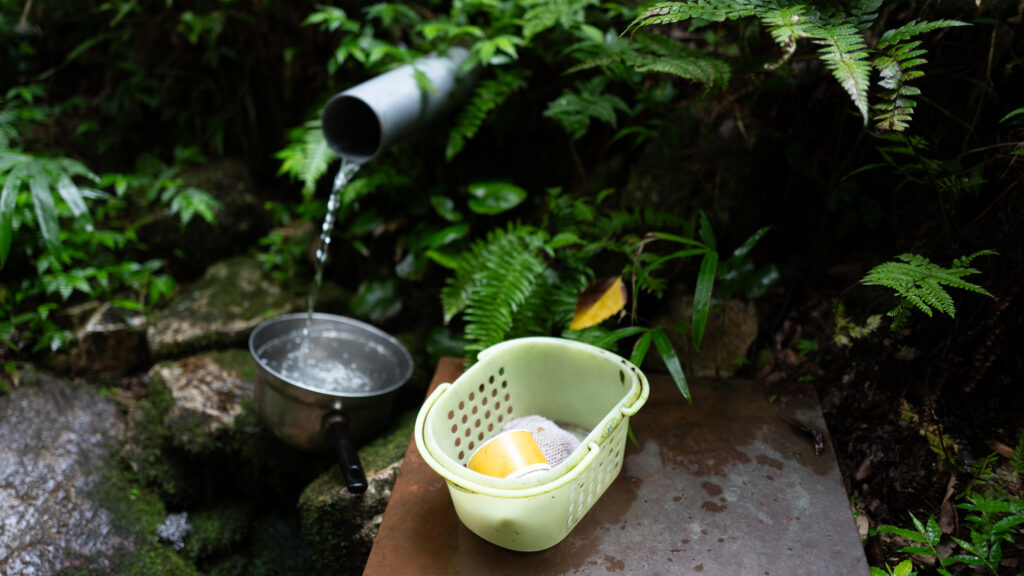
What do I hear?
Running water, an aeroplane, footsteps, cicadas, and voices as I collected water from the natural spring.
In a search for a connection between his love of Nature and Music he started exploring the art of Field Recording. Generally speaking, field recording is the activity of professionally recording in the open air, as opposed to studio recording.
When it came to going into nature in search of sound, I heard different layers to the world I knew and realised I needed to relearn the ecosystem.
Azuma started asking questions: Why is the wind blowing? Why are there creatures here and why is there a river? Not understanding this was the difference between intentionally recording and reactively recording natural phenomena. “If you don’t understand this, everything is driven by what is happening in front of you.”
He realised that he couldn’t record the sounds of living things if he didn’t go to the mountains at the right time, the flow of a river couldn’t be read if he couldn’t see the terrain. In recording, like in life, you can’t catch a phenomenon in a constant state of reaction.
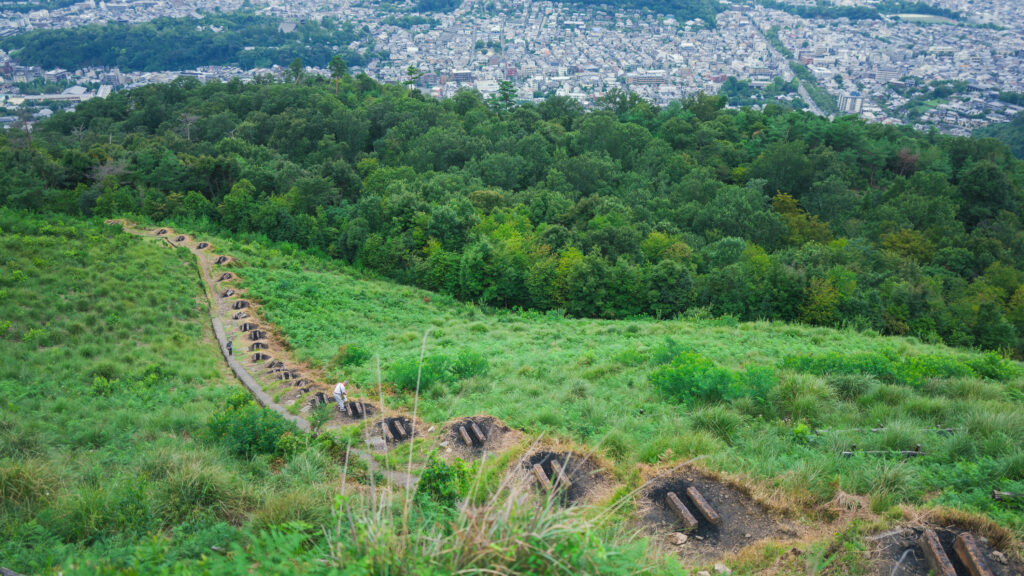
What do I hear?
Conversation, a whistle, a bell, footsteps on a metal drain, crows, shouts and people collecting charcoal in ziplock bags at the centre of Daimonjiyama’s Kyoto Gozan Okuribi.
Hypothesising that this intentional approach to field recording could be applied to recording music. Instead of sitting in a studio waiting for musicians to produce good music, he fantasised about designing a situation where honest music could occur naturally. “Life and sound in symbiosis with all living organisms.”
I think that what I am interested in is recording as a starting point to understand what environment the sound comes from and what it leads to.
From here he became interested in everything that could potentially produce the type of music he imagined possible. Designing the type of space, the time of day/year, the location and even the food. Hearing that a fast digestion is constitutive to cognitive focus and that a moderately complex aroma increases one’s imagination, he began researching different food-body-nature relationships in the search for good honest music.
If humans are part of nature and if many of us move in the same way under the same certain conditions, We could then become part of the nature we long for, just by living within that system.
The connections between mountains food and music were moving closer together, however he was just one encounter away from realising his assumptions.
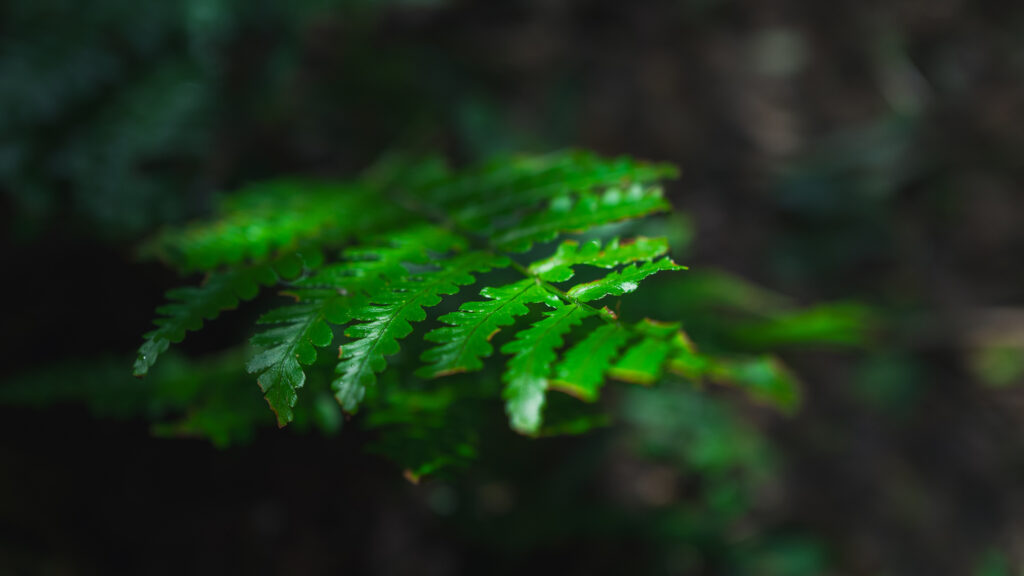
What do I hear?
Birds, cicadas, footsteps, breath, radio Ojiichan, distant cars, an aeroplane, a woodpecker, flies… a beam of sunlight illuminating leaves.
Anyone in the Japanese hiking community, particularly the Ultralight (UL) hiking community, has heard of Akira Natsume and Yamatomichi, his UL hiking gear brand.
Secretly immersed in researching and cooking Nepalese food at home while continuing his regular audio engineering work. Azuma in an opportunistic moment contacted Natsume-san suggesting that his upcoming talk event about Hiking in Nepal would be incomplete without first filling the stomachs of the audience with Nepalese food. Natsume-san agreed and Azuma packed his car with spices and drove to Tokyo where he filled the gallery with Nepalese aromas.
UL hiking is not only about the tools, but also about the complexities of humanity and influences from other genres.
It wasn’t long before they opened Yamashokuon under the gaze of Daimonjiyama in Kyoto. A Southern Indian cafeteria & UL hiking gear shop. The name “Yamashokuon” needs explanation, but it’s actually quite simple. Derived from three kanji characters: 山食音 (Yama, Shoku, On) “Yama” meaning mountain, mountain culture, and nature or natural. “Shoku” is short for “shukudo” meaning cafeteria, a straightforward style of restaurant or simply food, a meal. Finally “On”, short for “ongaku” meaning music, sound, listening and perhaps the conversation from a close-knit community. And it was a close-knit community bringing hikers, foodies and musicians together in one location. A place to meet, share information and plan new adventures; tables covered with maps, dishes of southern Indian cuisine and cups of local sake. Often Azuma’s field recordings accompanying in the background.
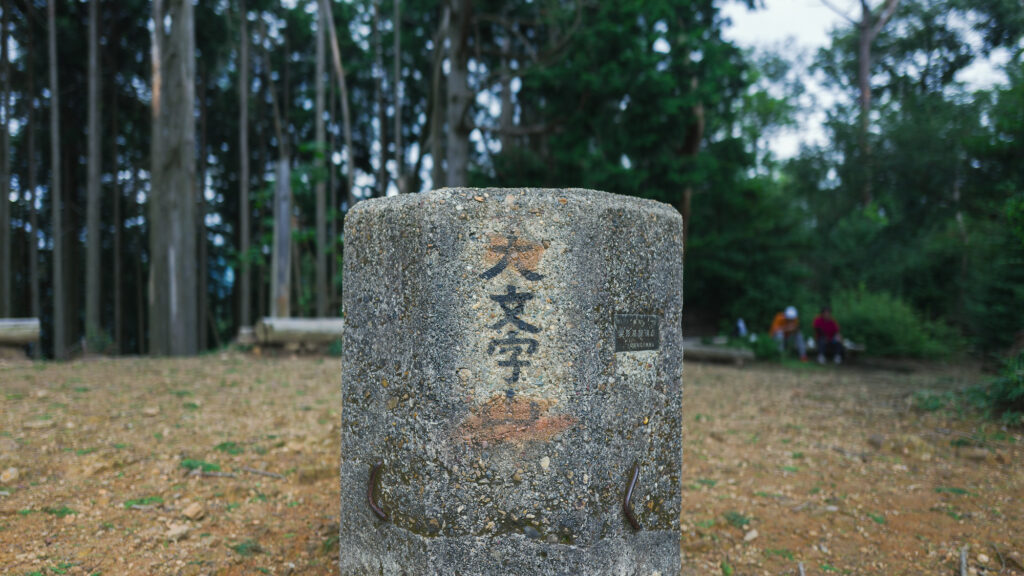
What do I hear?
Breath, summit regulars in friendly conversation, cicadas, distant cityscape, flies, wind… butterflies… ants at my feet… change.
I made it to the summit and there I sat looking down on Kyoto. The word summit sounds high. By all accounts Daimonjiyama isn’t a high mountain at 466m, but it’s tall enough. Tall enough to change one’s perspective on a place.
Recording natural phenomena allows a smooth understanding of the changes in things.
The summit has changed over the years, I think there was only a single bench that time I first met Azuma. We sat there together, drawn into conversation by the close proximity and endorphins from a shared experience. There are now enough seats that two people might never meet; it feels like a different place. I don’t begrudge the change, change is natural so it is natural that I gaze down to the space where Yamashokuon used to be. For it is with some sadness now closed.
Yes, the physical space Yamashokuon may be closed, but the conceptual space is more open than ever.
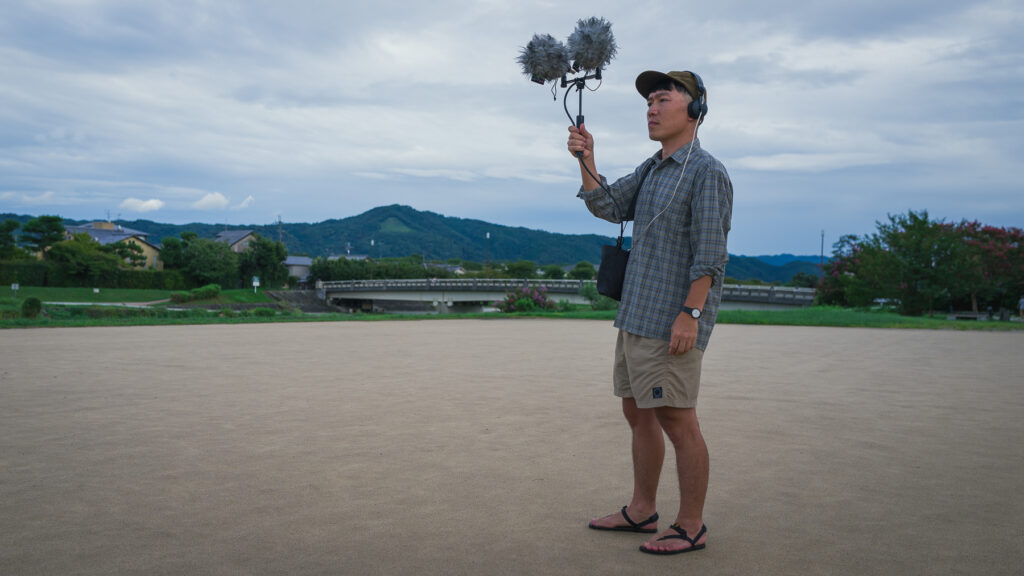
Any outcome is the perfect result of the system that created it, be it cooking a recipe, recording music or environment changes. Being aware of, working with and perhaps designing a system, or should I say lifestyle is the first step in creating any desired results. Thinking again, Design is the wrong word. Design implies control and it’s not about control, quite the opposite. It’s about nurturing awareness, symbiosis and acceptance of both systems and outcomes.
Azuma and I talked about change, how change is usually noticed after the fact. The end of summer, the closing of a shop. Spending extended time in the natural environment shows that change is constant. Four seasons in a year is an illusion; there is one season changing ever so slightly every single moment. All the natural world understands and embraces this, except us humans it seems.
If we think the change is beautiful, then we can live in synchronicity with that moment of change.
Azuma approaches the future in the same way he approaches field recording. With an awareness and an acceptance of the systems in place, be they man-made or otherwise, while nurturing an environment that will naturally produce positive outcomes and constant changes.
We can easily change our perspective of the city by hiking a small mountain. We can also change our perspective on the closure of Yamashokuon, from sadness of what has changed, to excitement in discovering what it is changing into.
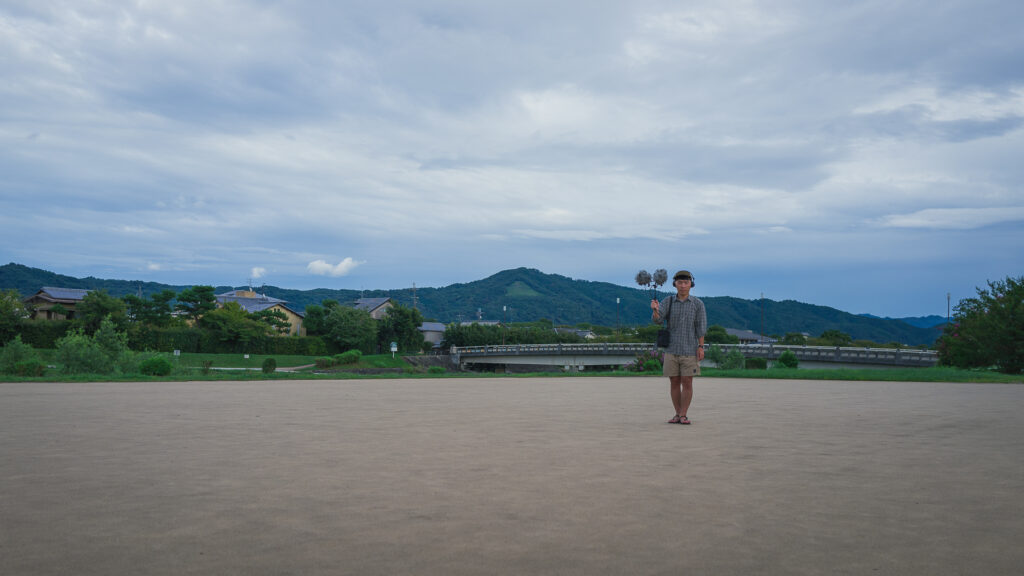
Do notions of success cross Azusa’s mind?
“I don’t really think of success that much, but perhaps it is the feeling of being able to enter into and become one with what I want to know more about.”
Is that your purpose in life?
“I have a purpose for what I do in my life, which is to do exactly what my material body —including the brain— is suited to do.”
…and so it goes.
Learn more about Takeshi Azuma and his fascinating projects with Yamatomichi, Brian Eno, and Ikema Yuko.
If you liked this story you might like to read & subscribe to James’s newsletter.











